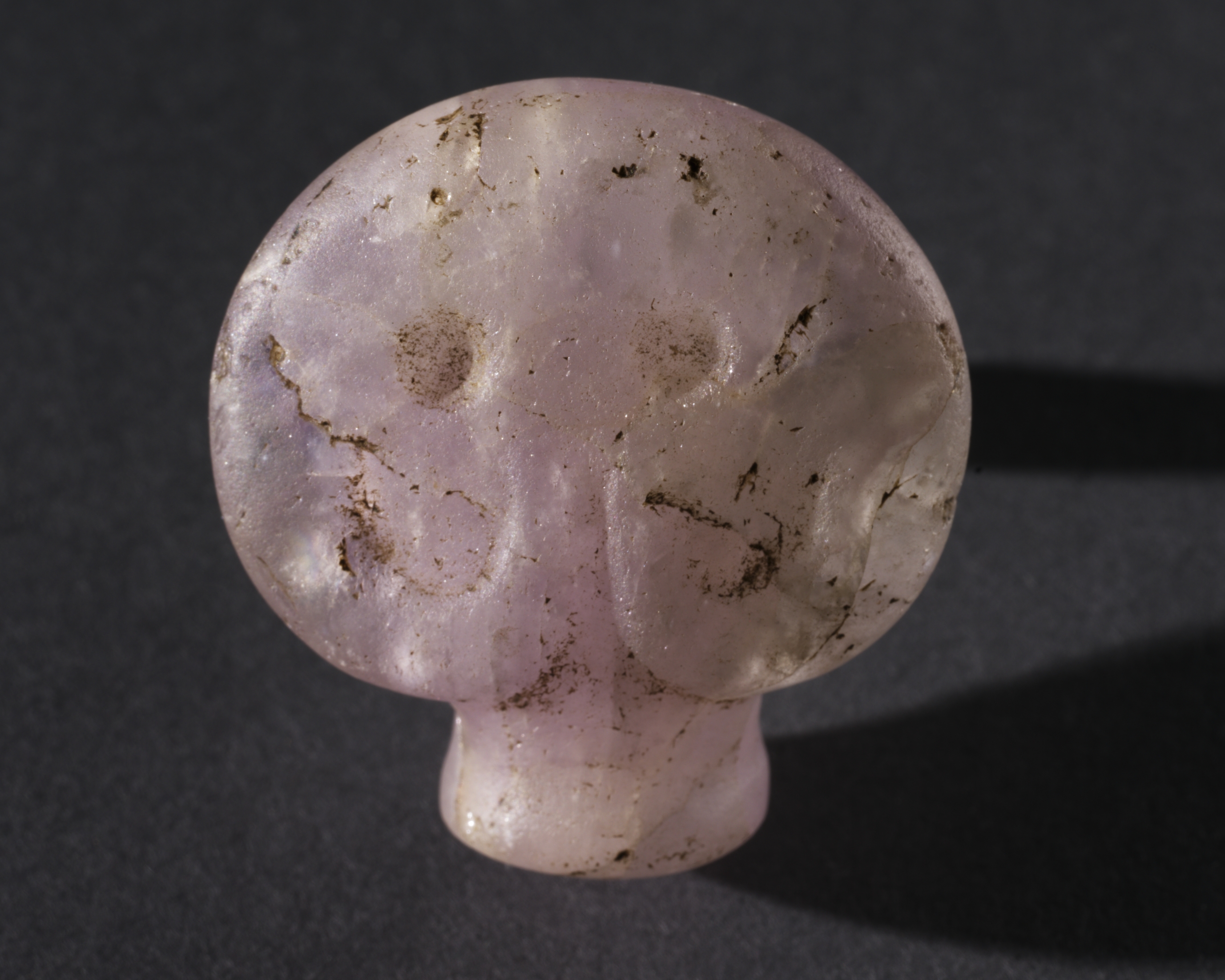The Cleveland Museum of Art
Collection Online as of April 24, 2024

Bull's-Head Amulet
c. 3500–2950 BCE
(5000–2950 BCE), Naqada II–III (3650–3000 BCE)
Overall: 3.4 x 3.7 x 2.6 cm (1 5/16 x 1 7/16 x 1 in.)
John L. Severance Fund 1998.26
Location: 107 Egyptian
Did You Know?
In ancient Egypt the symbol of a bull, when worn or held, was believed to offer protection and increase fertility.Description
This stunning amethyst amulet takes the shape of the head of a bull, an animal renowned from the earliest times in Egypt for its natural strength. The image presented is abstract, with only the most important of the animal features being represented: horns that curl downward in low relief, large eyes, and a narrow, cylindrical snout. The back is pierced horizontally for suspension. A well known but rare type, the bull's head amulet is also one of the earliest of all amulets from ancient Egypt, datable to the Predynastic period (4000–3000 BC). The outstanding composition and luxuriant violet hue of this example single it out as one of the very finest of its kind.- Purchased from Rupert Wace Ancient Art Limited, London
- Berman, Lawrence M., and Kenneth J. Bohač. Catalogue of Egyptian Art: The Cleveland Museum of Art. Cleveland, OH: Cleveland Museum of Art, 1999 Reproduced: p. 511; Mentioned: p. 511-2
- {{cite web|title=Bull's-Head Amulet|url=false|author=|year=c. 3500–2950 BCE|access-date=24 April 2024|publisher=Cleveland Museum of Art}}
Source URL:
https://www.clevelandart.org/art/1998.26